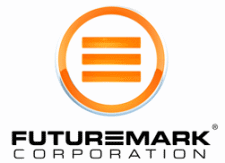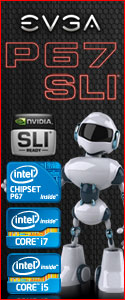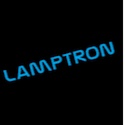Kingston Technology is certainly no stranger when it comes to computer system and flash memory products. A long standing supplier of OEM memory solutions, Kingston also offers several enthusiast level memory products, most notably their HyperX series. Today we will be looking at one such kit, the HyperX Genesis DDR3 1866Mhz (4X4Gb) Quad Channel kit. Before we get started, lets give you a little history on Kingston Technology:
“In 1987, Kingston® entered the market with a single product. Founders John Tu and David Sun fulfilled a severe shortage of surface mount memory chips with a memory module that would serve to redefine industry standards for years to come.
Combining one of the most extensive and stringent testing processes in the memory industry, an exceptional 24/7 free tech support center and a consistent roll-out of innovative technologies, Kingston Technology has continually set industry standards of quality and reliability throughout its history.
Kingston has grown to be the world’s largest independent manufacturer of memory products. With global headquarters in Fountain Valley, California, Kingston employs more than 4,000 people worldwide. Regarded as one of the “Best Companies to Work for in America” by Fortune magazine, Kingston’s tenets of respect, loyalty, flexibility and integrity create an exemplary corporate culture. Kingston believes that investing in employees is essential and that each individual employee is a vital part of the company’s success. “
The Kingston HyperX Genesis kit came packaged in a plastic clam shell, clear on one side and black on the other. On both sides of the container you will find tape with “Factory Sealed” printed on it. As long as the seal is not broken; this tape confirms the product inside is new and unused. We always like to see packaging that gives the end user that warm fuzzy feeling of getting what they paid for; and this packaging accomplishes that quite nicely. There is a large sticker applied to the package with the model number, bar code, and HyperX branding.
 |
 |
Removing the clear plastic cover reveals the four memory modules held securely in a black tray. Also, resting in the tray is a warranty and installation pamphlet.
 |
 |
The heat spreaders are decked out with a blue color and some very attractive “HyperX Genesis” embossing. Near the bottom left of the modules is a red and black emblem. It took a closer look to determine exactly what this emblem was. As it turns out, it’s a facial image of an ancient, Egyptian character – the logo for the Genesis product line. Each of the four modules have a sticker attached displaying the model number, voltage requirements, and serial numbers.
 |
 |
 |
 |
Moving along to the features and specifications of the HyperX Genisis KHX1866C9D3K4/16GX kit, we find the memory has three XMP timing parameters programmed and ready to use. Here are the values applied to those three XMP profiles:
• JEDEC: DDR3-1333 CL9-9-9 @1.5V
• XMP Profile #1: D3-1866 CL9-11-9 @1.65V
• XMP Profile #2: D3-1600 CL9-9-9 @1.65V
You may have noticed by looking at the above, the required voltage for running this memory at its advertised 1866Mhz speed is 1.65v. While the Intel specifications for SB-E processors (Quad Channel X79 Platform) say that memory voltage of 1.5v is preferred; many users out there are using 1.65v without issues. The SB-E platform is said to be robust enough to handle the 1.65v long term. There must be a certain amount of validity to this; as many memory manufactures are now offering quad channel kits at 1.65v.
Features
• JEDEC standard 1.5V (1.425V ~ 1.575V) Power Supply
• VDDQ = 1.5V (1.425V ~ 1.575V)
• 667MHz fCK for 1333Mb/sec/pin
• 8 independent internal bank
• Programmable CAS Latency: 9, 8, 7, 6
• Posted CAS
• Programmable Additive Latency: 0, CL – 2, or CL – 1 clock
• Programmable CAS Write Latency(CWL) = 7 (DDR3-1333)
• 8-bit pre-fetch
• Burst Length: 8 (Interleave without any limit, sequential with
starting address “000” only), 4 with tCCD = 4 which does not
allow seamless read or write [either on the fly using A12 or MRS]
• Bi-directional Differential Data Strobe
• Internal(self) calibration : Internal self calibration through ZQ
pin (RZQ : 240 ohm ± 1%)
• On Die Termination using ODT pin
• Average Refresh Period 7.8us at lower than TCASE 85°C,
3.9us at 85°C < TCASE < 95°C
• Asynchronous Reset
• PCB : Height 1.18” (30mm) w/ heat spreader,
double sided component
Specifications
| CL (IDD) | 9 Cycles |
| Row Cycle Time (tRCmin) | 49.5ns. (min) |
| Refresh to Active/Refresh Command Time (tRFCmin) |
160ns (min) |
| Row Active Time (tRASmin) | 36ns (min) |
| Power (Operating) | 1.410 W (Per Module) |
| UL Rating | 94 V -0 |
| Operating Temperature | 0°c to 85°c |
| Storage Temperature | -55°c to +100°c |
Additional Information as Provided by Kingston
Kingston’s KHX1866C9D3K4/16GX is a kit of four 512M x 64-bit (4GB) DDR3-1866 CL9 SDRAM (Synchronous DRAM) 2Rx8memory modules, based on sixteen 256M x 8-bit DDR3 FBGA components per module. Each module kit supports Intel® XMP (Extreme Memory Profiles). Total kit capacity is 16GB. Each module kit has been tested to run at DDR3-1866 at a low latency timing of 9-11-9 at 1.65V. The SPDs are programmed to JEDEC standard latency DDR3-1333 timing of 9-9-9 at 1.5V. Each 240-pin DIMM uses gold contact fingers.
As we enter the testing and benchmarking section of this review, here is the list of the testing software we will use:
- Cinebench 11.5 64 Bit
- PC Mark7
- AIDA64 Memory Tests
- wPrime 32
- SuperPI
- Maxxmem
Our test system is comprised of the following components:
- EVGA X79 FTW
- i7-3930K CPU – Overclocked to 4.5Ghz
- 2X EVGA GTX 560 Ti Classified Ultra (SLI)
- Corsair Professional Series 850 Watt PSU
We also have a G.SKill RipjawsZ Quad Channel 4X4 Gb 1866Mhz kit for comparison purposes. Both the Kingston and G.Skill kits sell for about the same price, or within $5 USD, depending upon where you look.
Both memory kits were set to their published timings for 1866Mhz operation, 9-10-9-28 for the G.Skill and 9-11-9-29 for the Kingston. While the published timings for the Kingston Genesis kit are slightly higher than the G.Skill kit, we’ll see how that effects the scores as we go through the benchmarking.
For out first set of tests, we measured the memory read, write, copy, and latency using AIDA64 and Maxxmem.
 |
 |
The AIDA64 tests show that the Kingston Genesis outperformed the G.Skill RipjawsZ in all but the memory read test. The Maxxmem scores however, showed the Kingston kit coming out on top in the memory read and memory write scores; and the G.Skill kit scored better on the memory copy and latency test. These results tell us that the performance difference between the two kits is minimal at best, even though the Kingston runs at slightly looser timings.
Next we used Cinebench 11.5 X64, using both the CPU and GPU tests, here are those results.

Good showing by the Kingston Genesis here – besting the G.Skill RipjawsZ in both tests. We are beginning to really like this Kingston HyperX!
wPrime 32 and SuperPI are the next benchmarks we decided to run. For wPrime 32, we ran both the 32M and 1024M tests. SuperPI was run using both the 1M and 32M tests. Here are those results.
 |
 |
Once again, the Kingston HyperX Genesis kit came out on top of all the test runs. The scores are extremely close and probably not enough for any “Real World” difference to the average user; but, again we point to the fact that the Kingston kit is able to best the G.Skill kit with looser timings.
This Kingston HyperX Genesis Quad Channel kit has proven to be both stable and a great performer. The memory was completely stable and breezed right through every test we could throw at it. Couple this with the great aesthetics this kit provides; and you have a winning combination on your hands.
Many times when new platforms hit the market, such as the X79 series, we run in to compatibility issues when trying different memory kits from various manufacturers. This proved to NOT be the case with the Kingston KHX1866C9D3K4/16GX kit. It easily ran at advertised speeds and showed excellent compatibility. To further test compatibility across a wider range of platforms, we plugged these modules into a P67 and X58 series motherboard just for a quick compatibility test. Both the P67 and X58 boards booted right up and had no issues at all with this kit. We can say with confidence that the Kingston HyperX Genesis DDR3 1866Mhz 4X4 kit will work on any of the most recent platforms and work well.
A quick online check shows this kit is selling for $129.99 USD, which puts it right in line with similar products from other manufacturers. At that price point for 16GB of quad channel memory, it’s hard to argue the value this kit provides. If you are in the market for a great looking and even better performing quad channel memory kit, this kit needs to be on your short list.
Pros
- Compatibility across many current platforms
- Great looks
- Excellent performance
- Three XMP profiles (1333Mhz, 1600Mhz, 1866Mhz)
- Factory sealed packaging
Cons
- 1.65v requirement for 1866Mhz operation
Overclockers Tech has awarded the Kingston HyperX Genesis 4X4Gb DDR3 1866Mhz (KHX1866C9D3K4/16GX ) kit a 9.5/10 and the accompanying gold award!
Dino DeCesari (Lvcoyote)



 Posted in
Posted in 
 Store
Store


